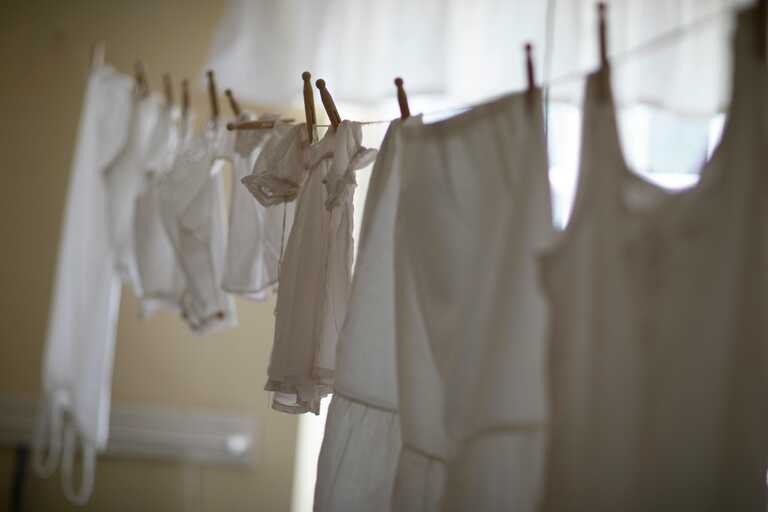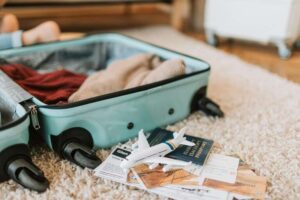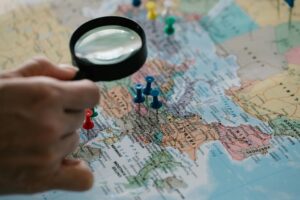Traveling light can often mean sacrificing convenience for practicality. One of the most common challenges for travelers is managing laundry. When you’re hopping from one destination to another, lugging around dirty clothes or finding a laundromat can be inconvenient and time-consuming. Enter the ultimate travel hack: washing your clothes in the sink. This method isn’t just about getting rid of the accumulated dirt; it’s about smart packing and efficient traveling. Here’s everything you need to know to master the art of washing your clothes like a pro while on the go.
Why Opt for Sink Washing?
When traveling, carrying a suitcase full of clothes for every day of your trip is impractical. Not only does it take up precious luggage space, but it can also make navigating airports and public transit a hassle. Sink washing is the answer to these challenges. It allows you to pack fewer clothes, reduce luggage weight, and maintain freshness throughout your journey. Plus, it’s budget-friendly, given that hotel laundry services can be costly. This approach gives you the freedom to stay clean and light.
Beyond the practical benefits, sink washing also contributes to more sustainable travel. By packing less and washing more frequently, you’re reducing the weight of your luggage, which in turn reduces fuel consumption on flights. Additionally, hotel laundry services often use industrial-sized machines for small loads, wasting both water and energy. Taking matters into your own hands means controlling your environmental impact while traveling.
For long-term travelers or digital nomads, mastering sink washing can significantly extend the lifespan of a minimalist wardrobe. Instead of searching for laundromats in unfamiliar cities or paying premium prices for hotel services, you maintain control over your schedule and budget. This independence is particularly valuable in remote locations where laundry facilities might be scarce or unreliable.
What You’ll Need
Before embarking on your trip, ensure you have the essential tools for efficient sink washing. First, invest in a high-quality, travel-sized laundry detergent. Look for products specifically designed for washing clothes on the go, as they often come in compact, leak-proof bottles. Dr. Bronner’s liquid soap is another favorite as it’s multi-purpose and eco-friendly.
A universal sink stopper is your next must-have. Many sinks, especially in budget accommodations, either don’t have stoppers or have ones that don’t work effectively. A portable, silicone stopper can fit most sink types and ensure you have no water leakage during washing.
Finally, a quick-dry microfiber towel or travel clothesline will help expedite the drying process. These tools make it practical to have your garments ready by the next day.
For travelers wanting to level up their sink laundry game, consider adding these specialized items to your kit: Laundry soap sheets are ultra-lightweight alternatives to liquid detergents and eliminate any concerns about TSA liquid restrictions. A collapsible wash basin gives you more space for soaking larger items when sink sizes are inadequate. Portable stain removers in pen or wipe form can target specific spots without requiring a full wash. And for those truly committed to efficiency, compression travel bags can help squeeze excess water from clothes, significantly reducing drying time.
Temperature can be a crucial factor in effective clothing care. If you’re traveling with a mix of fabrics, consider packing a small digital thermometer to ensure you’re using appropriate water temperatures for delicate items. While this might seem excessive to some, fabric enthusiasts know that temperature control can extend the life of premium travel garments.
The Process of Washing in the Sink
Once you have your toolkit ready, it’s time to get down to business. Follow these steps to wash your clothes efficiently:
1. Plug and Fill: First, use the sink stopper to plug the drain, then fill the sink with lukewarm water. Avoid using hot water as it can cause fabrics to shrink or colors to run.
2. Add Detergent: Pour a small amount of detergent into the water. You don’t need much, especially since traveling detergents are usually concentrated. Use just enough to create a mild lather without it being excessively sudsy.
3. Submerge and Soak: Place your clothes in the water, ensuring they are completely submerged. Allow them to soak for 10-15 minutes to loosen dirt and oils.
4. Scrub Gently: For heavily soiled areas, gently rub the fabric against itself or use a travel scrubber. Be cautious not to be too vigorous, as it can damage the fabric.
5. Rinse Thoroughly: Drain the soapy water and refill the sink with clean water. Rinse your clothes to remove all detergent, repeating as necessary until the water runs clear.
6. Hand-Wring Excess Water: Gently squeeze out the excess water from the clothes. Avoid twisting fabrics, as this can cause them to stretch or lose shape.
If you’re washing multiple items, consider organizing them by color and fabric type. This strategic approach prevents color bleeding and allows you to optimize water usage. Start with lighter colors and less soiled items, then progress to darker colors and more heavily soiled pieces. This sequence maximizes efficiency while minimizing the risk of cross-contamination between garments.
For travelers in extremely remote locations where water might be scarce or of questionable quality, consider bringing water purification tablets or a portable filter. Clean water isn’t just important for drinking—it’s essential for properly caring for your garments without introducing potential contaminants or discoloration from minerals present in some water sources.
Remember that some accommodation types offer advantages for sink laundry. Bathtubs provide more space for larger items like pants or dresses, while kitchenette sinks might have higher water pressure for more effective rinsing. Scout your accommodation upon arrival to determine the optimal washing station for your needs.
Drying Your Clothes
Drying your clothes is just as important as the washing process, particularly if you need them ready for the next day:
1. Roll in a Towel: Lay a dry towel flat and place your clothing on top. Roll up the towel with the garment inside, then press firmly. This technique absorbs excess water without stretching the fabric.
2. Hang to Dry: Use a travel clothesline, which often attaches to any surface with suction cups or hooks, or utilize hangers and railings in your accommodation. Ensure there’s enough airflow to allow the clothes to dry thoroughly. If your hotel room is humid, consider placing your clothes near a fan or air conditioning unit.
3. Employ a Hairdryer: If time is of the essence, use a hairdryer on a warm setting to quicken the drying process. Keep the dryer moving to avoid overheating any spot on the fabric.
For travelers visiting tropical or humid regions, drying clothes can become particularly challenging. In these environments, air conditioning becomes your ally. Position your hanging clothes in the direct path of the AC unit’s output, creating a makeshift drying chamber. If your accommodation has a dehumidifier, running it in a closed bathroom with your hanging clothes can dramatically speed up drying times by extracting moisture from the air.
The positioning of your clothes while drying can significantly impact drying time and final appearance. Hanging shirts from the bottom hem rather than the shoulders helps prevent stretching and misshaping. For pants, hanging them by the waistband with the legs fully extended minimizes creasing and allows for faster drying as air can circulate through the leg openings.
In shared accommodations like hostels, securing your laundry becomes another consideration. Small travel carabiners can attach to your clothesline, allowing you to clip items securely and prevent them from being displaced by wind or other travelers. Small mesh laundry bags can also be useful for keeping socks and underwear together during both washing and drying phases.
Smart Packing with Sink Washing in Mind
When you’ve decided that sink washing will be your go-to during your travels, pack carefully:
Stick to lightweight and quick-drying fabrics like polyester, nylon, merino wool, or bamboo. These materials air-dry rapidly without retaining much moisture.
Consider a color palette that allows for easy mixing and matching. This minimizes the number of clothes you need and allows for re-wearing garments in different combinations.
The concept of a capsule wardrobe becomes even more valuable when traveling with sink washing in mind. Focus on versatile pieces that can transition from day to night with simple accessory changes. Dark colors and patterns are particularly practical as they show less visible soiling between washes and can withstand more wear without looking tired.
Technical fabrics designed for outdoor activities often make excellent travel companions. Many modern performance textiles incorporate antimicrobial properties that naturally resist odors, allowing you to extend wear between washes. Some even feature moisture-wicking capabilities that keep you comfortable in various climates while also facilitating faster drying after sink washing.
Consider the cultural context of your destination when planning your sink-washing strategy. In some countries, visible clotheslines might be frowned upon or even prohibited by local regulations. Research local customs regarding laundry practices, particularly if you’re staying in residential areas or smaller communities where customs may be more traditional.
Additional Tips for Sink Laundry Success
Keep these extra tips in mind for the best results:
Time Management: Wash small batches rather than waiting for clothes to pile up. This not only makes the task manageable but also ensures you’re never left without clean clothes.
Be Mindful of Stains: Treat stains as soon as possible. Carry a travel stain remover and apply it immediately on troublesome spots to prevent them from setting.
Stock Backup Accessories: Pack extra items like socks and underwear, which are small and can be challenging to dry overnight.
Pre-treat When Possible: For items you know will become heavily soiled, like hiking clothes or workout gear, consider a quick pre-rinse immediately after use. This prevents sweat and oils from setting into the fabric, making the eventual wash much more effective.
Adapt to Local Water Conditions: Water hardness varies dramatically around the world and can affect how well soap lathers and rinses. In hard water areas, you might need slightly more detergent, while in soft water regions, you’ll need less. Pay attention to how your soap behaves in different locations and adjust accordingly.
Develop a Rotation System: With limited clothing, establish a wear-wash-dry rotation that ensures you always have clean options available. Some experienced travelers follow a “one wearing, one washing, one drying” rule for each type of garment, ensuring a continuous cycle of clean clothes.
Pack Dual-Purpose Garments: Items that serve multiple functions reduce the total number of pieces you need to pack. For example, convertible pants that zip off into shorts, dresses that can be styled differently for various occasions, or shirts that work for both hiking and dining out are ideal for travelers committed to sink washing.
Consider Fabric Treatments: Before your trip, consider treating key garments with water-repellent or stain-resistant sprays. These treatments can extend the time between necessary washes by preventing spills and stains from penetrating the fabric, particularly useful for outer layers and items worn in unpredictable conditions.
Troubleshooting Common Sink Washing Challenges
Even the most experienced travelers encounter occasional hiccups with sink laundry. Here are solutions to common problems:
Stubborn Odors: If standard washing isn’t eliminating persistent odors, try adding a small amount of white vinegar to your rinse water. The acid helps neutralize alkaline residues from sweat and restores the pH balance of fabrics. The vinegar smell dissipates as clothes dry, leaving them genuinely fresh.
Limited Drying Space: In tiny hotel rooms or shared accommodations, drying space can be at a premium. Utilize vertical space by hanging items from curtain rods, shower bars, and door frames. Layering garments on hangers (hanging lighter items below heavier ones) can maximize limited hanging space.
Sudden Weather Changes: If unexpected rain interrupts your outdoor drying plans, create an indoor microclimate by hanging clothes in the bathroom and running a hot shower for a few minutes with the door closed. Then open the bathroom door slightly and turn on the room’s AC or fan to draw the humid air out, creating circulation that accelerates drying.
Color Bleeding: If you notice colors beginning to run during washing, immediately remove the garment and rinse it separately in cold water. For future washes, add a color-catching sheet to your travel laundry kit—these small sheets trap loose dyes before they can transfer to other garments.
Environmental Considerations
Sink washing isn’t just convenient—it can be an environmentally conscious choice when done thoughtfully:
Select biodegradable and phosphate-free detergents to minimize your environmental impact, especially when traveling in areas with sensitive ecosystems or limited wastewater treatment. Some eco-friendly detergents are specifically formulated to work effectively in cold water, further reducing energy consumption.
Be mindful of water usage, particularly in regions experiencing drought or water scarcity. Reuse rinse water for initial soaking of your next batch, or collect it for other purposes like flushing toilets if appropriate. These small actions reflect responsible tourism practices that respect local resources.
The environmental benefits extend beyond your immediate impact. By maintaining a minimal travel wardrobe through effective sink washing, you’re reducing the overall consumption patterns that drive fast fashion’s environmental toll. Quality garments that withstand frequent washing and prolonged wear represent a more sustainable approach to travel wardrobes.
By incorporating these travel hacks into your routine, you’ll not only save space and money but also guarantee fresh clothes throughout your journey. Ready to set out on your next adventure with a lighter suitcase and a foolproof plan for laundry? Visit our website to explore our range of recommended travel gear and discover how you can travel smarter and more efficiently!





